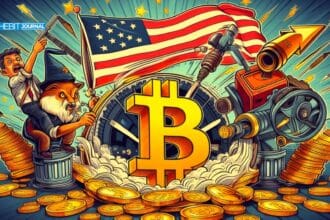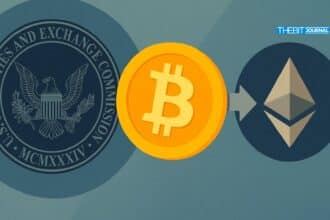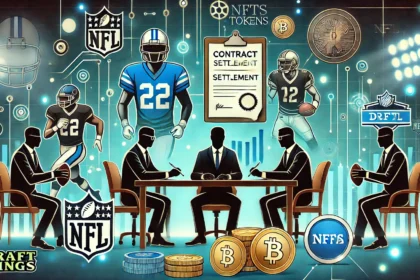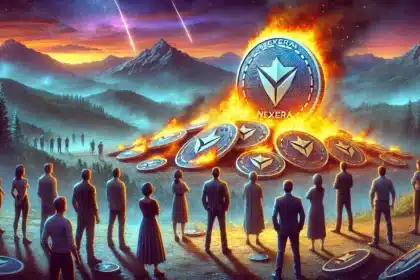 Supply chains are the arteries of the global economy, transporting goods worth trillions of dollars every year. Yet they remain afflicted with secrecy, forgery, waste, and non-accountability. From bogus medicines entering the supply chain to human rights violations in the production of cobalt, these issues are not only functional, but ethical, monetary, and legal.
Supply chains are the arteries of the global economy, transporting goods worth trillions of dollars every year. Yet they remain afflicted with secrecy, forgery, waste, and non-accountability. From bogus medicines entering the supply chain to human rights violations in the production of cobalt, these issues are not only functional, but ethical, monetary, and legal.
Most recently, blockchain technology has been hailed as the be-all and end-all of resolving such problems. On pillars of decentralization, transparency, and immutability, blockchain can digitize supply chains into safer, more streamlined, and more ethical chains.
The question is not whether blockchain can improve logistics, but how quickly markets can deploy it to achieve true blockchain supply chain transparency.
Blockchain Supply Chain Transparency: An International Problem Costing Billions
In a joint study conducted by the Organisation for Economic Co-operation and Development (OECD) and the European Union Intellectual Property Office (EUIPO), the fake and pirated goods constituted as high as 3.3% of global trade in 2016 and were valued at as much as $509 billion USD. The widespread infiltration of fakes not only dilutes brand equity but places supply chains in severe jeopardy of insecurity and noncompliance.
A 2021 report by McKinsey & Company added further that all sorts of supply chain disruptions, such as those that result from fraud, bad management, and bad traceability, can result in as much as 45% of each decade’s annual revenue of every other company being lost. The study added that those with greater end-to-end supply chain visibility had far shorter recovery and less loss as it occurs.
Legacy supply chain systems operate with disconnected systems of information, paper-based ledgers, and manual entry. These techniques are not only prone to error but also subject to tampering. Where supply chain information is siloed, it is impossible to readily trace the movement of a product or establish whether it is genuine.
In 2021, a giant food retailer was forced into recalling over 100,000 servings of pre-packed vegetables amid contamination fears. Tracing was hampered due to inaccurate records. The end result? A reputational and financial loss that blockchain would have prevented.
Blockchain: A Single Source of Truth in a Decentralized World
Blockchain is an immutable ledger that keeps a record of transactions on a network of peers. The transaction is timestamped, immutable, and publicly verifiable. Data added cannot be altered without consensus once added, and it creates a tamper-proof history.
For supply chains, it would enable all points within the movement of a product, from raw material through shelf, to be recorded and sent in real time. No more need have stakeholders rely on faith alone. With blockchain explorers, they can instantly validate information.
A survey conducted by MHI in collaboration with Deloitte (contained in the 2021 MHI Annual Industry Report) found that 12% of companies were using blockchain today, and 41% predicted it would be in use within five years. The same report projected that 10% of companies planned to invest in blockchain and related distributed ledger solutions in the next three years.
Deloitte’s general research confirms that businesses across industries invest in blockchain as they attempt to enhance supply chain management. The capacity of blockchain to digitize papers, automate procedures, and reduce fraud has drawn extensive attention in private industry as much as government.
Real-Time Traceability: The Foundation of Safer, Smarter Commerce
Products have blockchain-enabled supply chains with digital passports. These contain information like origin, temperature, transit time, as well as handling procedures. With smart contracts—the agreements encoded on the blockchain executing automatically—the conditions and rules can be automated.
For example, perishable goods can be traced using IoT sensors linked with blockchain. In case the temperature crosses the safe threshold, the smart contract can automatically trigger alerts or prevent further shipment.
IBM’s Food Trust platform on Hyperledger Fabric tracks the movement of food products in real-time. It already reduced product recall time from 7 days down to 2.2 seconds, according to details released by IBM Blockchain Pulse.
Combatting Counterfeits: How Blockchain Assists in Authentication
Counterfeit drugs pose a $200 billion per year threat in the drug industry, according to the World Health Organization (WHO). The fake drugs may be lethal, more aggressive in regions that poorly regulate.
Blockchain offers an incorruptible record of custody for each unit of drug, from the manufacturing facility through the pharmacy. With scanning of a QR code affixed to the blockchain, consumers and pharmacists can immediately verify the legitimacy of a product.
The MediLedger Project, with backing by Big Pharma, already demonstrated at scale that blockchain can enable compliance with the U.S. Drug Supply Chain Security Act (DSCSA). The platform keeps the manufacturing, wholesale, and pharmacy industries all using the same information, stored immutably.

Ethical Sourcing and Labor Responsibility
Transparency isn’t only important for safety, it’s important for ethics. The International Labour Organization explains that over 27.6 million live under forced labour, with many of those in international supply chains.
A blockchain can be used to store every point of origin, making it easier to be able to trace whether materials were procured under ethical work conditions. Ethical companies can verify those claims with immutable records.
The Responsible Sourcing Blockchain Network (RSBN) is tracing electric vehicle battery cobalt with blockchain. It is built on IBM’s Blockchain platform and can be employed to certify responsible mining practices in the Democratic Republic of Congo, where rampant abuses of human rights have happened.
Reducing Friction using Smart Contracts and Tokenization
The conventional supply chains have labor-intensive procedures replete with inefficiencies. It may take days or weeks for purchase orders, invoices, and clearances. Blockchain smart contracts eradicate such friction by automating procedures that would otherwise require human authentication.
For instance, payment for goods can be made automatically once the product reaches a GPS-confirmed checkpoint recorded on-chain. It reduces payment delays, creates greater trust, and administrative cost.
Tokenization—the digitization of tangible assets—is at play here as well. Tokenized cargo in transit may be traded as tokens and insured, all in real time. It gives consumers new liquidity options and microinsurance for high-cost cargo.
Blockchain Interoperability: The Next Frontier of Global Logistics
For blockchain to revolutionize supply chains, interoperability is critical. Supply chains traverse across continents, vendors, and platforms. The communication protocols across chains like Cosmos and Polkadot enable information exchange across heterogeneous blockchain networks.
Interoperability is the way forward into the next phase of blockchain development as far as the Blockchain Research Institute report is concerned. Without it, on-chain silos may re-emerge. Programmers have been developing on Layer-2 scaling solutions and bridges for seamless network-to-network integration.
This is more important within multi-chain environments like Solana, Ethereum, and Avalanche where industries have diverse protocols. Solana, for instance, is becoming popular within logistics forums due to the cheap and very fast nature of transactions. At 65,000 transactions per second capacity as confirmed by the Solana block explorer, it is offering the scalability that is required within enterprise deployments.
Regulatory Systems: Enhancing Global Confidence
Even with blockchain’s promise, regulatory doubt is still a key obstacle. Regulations vary across territories, more so when blockchain meets financial services, data protection, or trade.
The European Union’s Markets in Crypto-Assets (MiCA) framework and the United States’s SEC guidance establish the basis for clearer compliance standards. These laws call for protection for users while encouraging innovation.
Firm regulation can push blockchain adoption by supply chains by 45% within five years, according to a 2023 PwC report. Both developers and businesses are watching regulatory developments keenly lest they trigger legal landmines.
Adoption Challenges: It’s Not All Smooth Sailing
While blockchain is an appealing solution, it is far from problem-free. Compatibility with legacy systems, costly implementation fees, and the scarcity of skilled programmers can all hamper implementation.
A study at MIT Center for Transportation & Logistics explained that only 15% of the surveyed firms had successfully scaled blockchain pilots. The rest were faced with technical or organisational challenges, such as resistance to change or the inability of the departments to align with one another.
Furthermore, blockchain’s immutability, though frequently an asset, is equally capable of being a liability. Data incorrectly input at first cannot be corrected, causing indelible errors unless overlaid with corrective log files.
However, it is not impossible. With evolving toolkits, improving interfaces, and increasing awareness, the challenges are slowly being overcome.
Market Momentum: Analysts Start Taking Notice
Market commentators and cryptocurrency analysts have paid more attention to blockchain’s entry into supply chain uses. Issues surrounding Solana’s input into supply chain tokenization and Ethereum’s smart contract capability crop up with regularity on online forums like Reddit’s r/cryptotechnology and Twitter’s crypto analysts thread.
One of the most popular of the emerging trends is on-chain real-world assets (RWAs) integration – aligning logistics with on-chain infrastructure. It is transforming the supply chain framework from being a cost center to a value-creating system.
Final Words
Transparency by design is the future of supply chains. The immutable, decentralized, and real-time blockchain delivers that vision to reality. From fraud avoidance to confirmation of ethical origin, its impact is across all industries relying on the complex logistics.
As regulatory comprehension is deepened and scaling challenges are addressed, blockchain is bound to transition beyond being a niche development and become an inherent component of world trade infrastructure.
Investors, builders, analysts, and scholars must listen—not only because of the economic opportunity, but because the stakes span across food security, human rights, and global sustainability.
Glossary of Terms
- Blockchain: A digitized shared ledger on which transactions are recorded across a network.
- Smart Contract: Self-executing software that takes action once certain conditions have been met.
- Tokenization: Converting assets, either physical or digital, into blockchain tokens.
- Supply Chain Visibility: Product movement visibility from origin to end-user.
- Immutability: The information recorded on a blockchain cannot be altered once recorded, and cannot be deleted.
- Interoperability: The ability of different blockchain systems to share information and communicate.
- Real-World Assets (RWAs): tangible assets like goods, real estate, or equipment recorded digitally on a blockchain.
- IoT (Internet of Things): A group of devices that communicate and share information.
- Layer-2 Solutions: On top of blockchain protocols that increase scalability.
- Distributed Ledger: A database that is divided across multiple sites or participants.
Frequently Asked Questions
- How does blockchain enhance supply chain visibility?
A blockchain keeps each transaction tamper-proof and broadcasts it on a network, offering traceable and verifiable tracing of goods.
- Might blockchain prevent counterfeiting?
Yes, it enables authentication of the origin and history of a product by using publicly available information, reducing the possibility of fakes.
- Which industries benefit most from blockchain applied in supply chains?
Most of the adoption is seen in industries like fashion, food and beverages, medicines, and electronics due to traceability and authentication requirements.
- Does blockchain implementation cost much for small businesses?
Set-up expenditures can be costly, but blockchain-as-a-service platforms and modular solutions can now make it more economical.
- How is blockchain being utilized in supply chains?
Certainly. Data entry errors, regulatory complexity, and interoperability issues raise key problems but can be handled with best practices.
Summary
This blog explains how blockchain technology can transform end-to-end supply chains globally through unmatched traceability, speed, and transparency. Through real-world numbers, industry research, and case studies, the article unfolds blockchain’s war on counterfeits, ethical procurement, and logistics as enabled through smart contracts. With technical and compliance issues aside, steam is building as builders and researchers embrace blockchain’s trustless model of decentralization. Through vivid illustrations of functionality and implementation, this article enlightens professionals in finance, students, and programmers on blockchain as more than hype, but as being amongst the pillars of the future of supply chain infrastructure



























